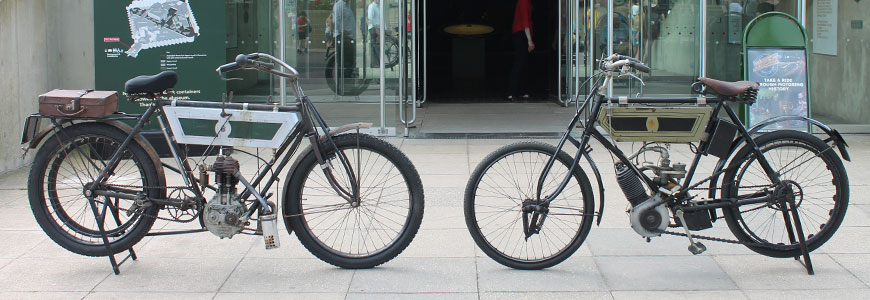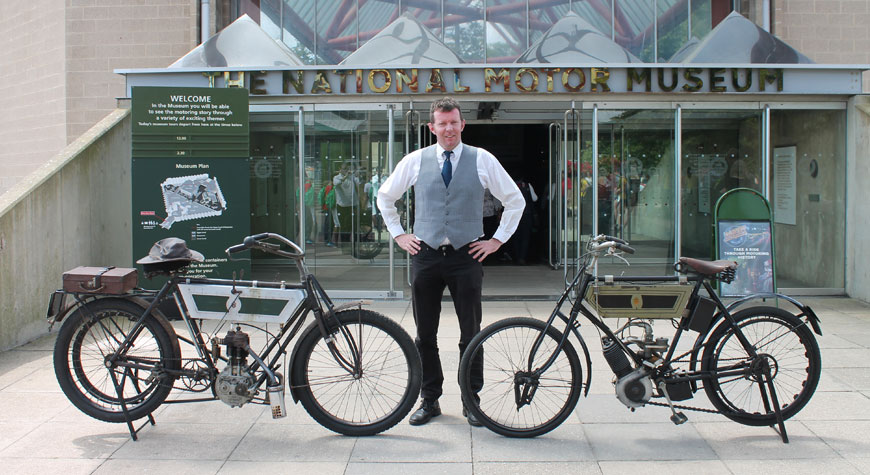
In 1905, the first model of Triumph motorcycle ever to be fitted with the company’s own engine was ridden on a gruelling 1279-mile road test to prove its reliability. Exactly 110 years to the day, one enthusiast has recreated a 200-mile leg of that journey, motoring from Oxford to Beaulieu and back again.
Nick Jonckheere rode his 1905 Triumph 3hp motorcycle down to the National Motor Museum, where it was met by the museum’s own 1903 Triumph 2.5hp motorcycle, which is thought to be the oldest roadworthy Triumph in the world.
This mammoth trip celebrated the incredible journey made by respected motoring writer the Reverend Basil Davies, who wrote under the name of Ixion. His 1905 road-test was a severe trial for the first motorcycle to have been designed entirely by Triumph. However, the bike’s commendable reliability helped to establish the manufacturer’s reputation as a builder of quality motorcycles.
Although only taking in one leg of the original route, Nick Jonckheere’s 200-mile journey was no small task for a machine over a century old. However, the Triumph took the trip in its stride. “The bike proved to be very reliable on the way to Beaulieu from the New Forest,” said Nick. “Aside from having to adjust the drive-belt, it gave absolutely no trouble at all and used less than a gallon of fuel.”

The engine powers the rear wheel by means of a belt, while auxiliary pedals are connected by a chain. This feature proved very useful. “On steeper hills, assistance by pedalling is called for,” said Nick. “There was only one hill which it didn’t make it up, when I had to get off and push.”
A support car accompanied Nick on the run, driven by fellow Triumph motorcycle owner Paul Gander. “The countryside has changed a lot since 1905, when many of the roads would have just been gravel tracks,” he said. “We tried to keep to the B-roads and away from the busy town centres.”
